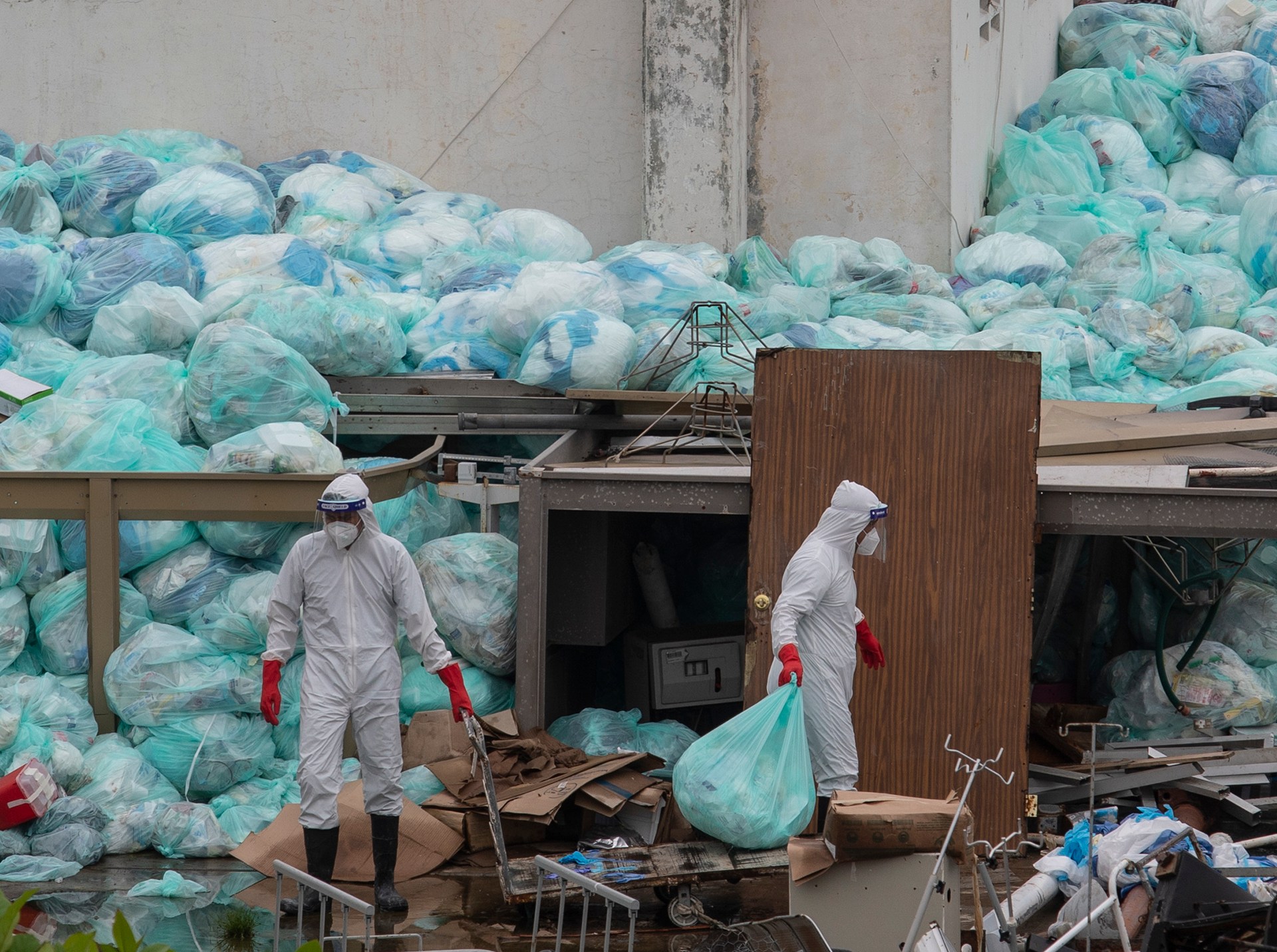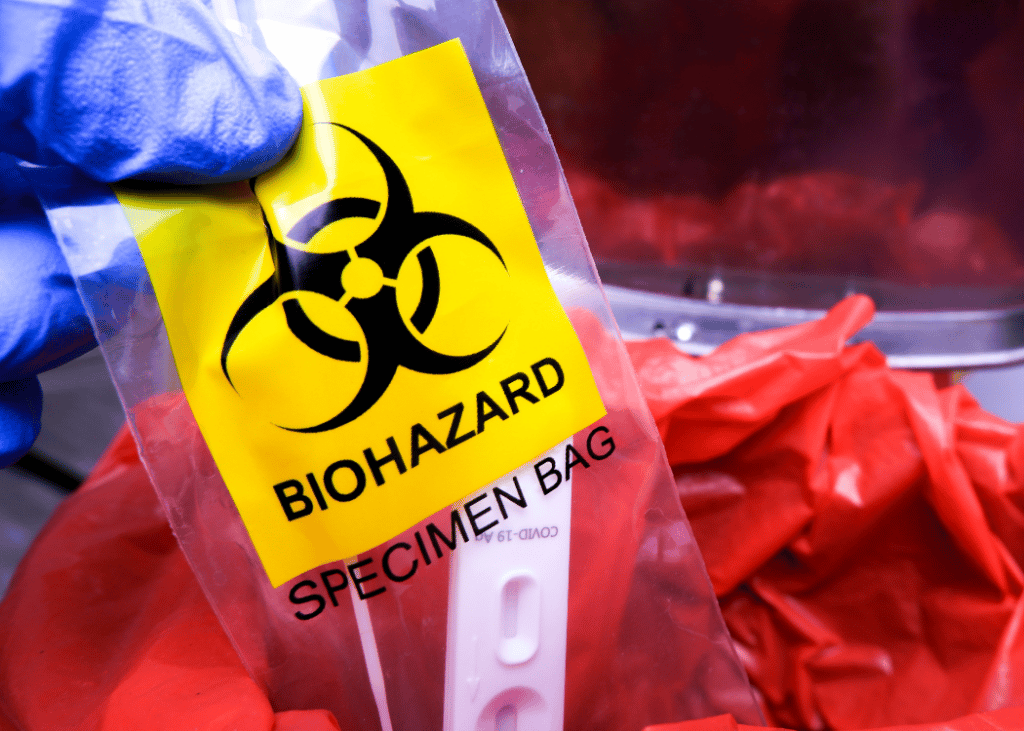Know-how Released: Understanding the Art of Medical Waste Removal for Health And Wellness Facilities
Know-how Released: Understanding the Art of Medical Waste Removal for Health And Wellness Facilities
Blog Article
Checking Out Different Garbage Disposal Options for a Cleaner Atmosphere
In the search of a cleaner environment, the administration of garbage disposal has become an essential prime focus for lasting advancement. With a multitude of waste disposal options readily available, ranging from conventional landfill methods to ingenious waste-to-energy modern technologies, the option of how we handle our waste has far-ranging effects for our world's health. By taking a look at the different techniques and techniques utilized in recycling, composting, incineration, landfill management, and waste-to-energy processes, a much deeper understanding of their impacts and efficiency can be obtained. The pursuit for ideal waste disposal techniques that prioritize environmental conservation while satisfying the requirements of a growing populace remains a pushing concern in today's globe.
Recycling Techniques
Implementing effective recycling approaches is vital in lessening waste and promoting sustainability in our setting. Recycling includes the procedure of transforming waste materials into reusable challenge avoid unnecessary disposal. Among the most usual recycling methods is material healing, where products like paper, plastic, glass, and steel are gathered, arranged, and refined to produce new items. This process not just conserves natural deposits however likewise minimizes power intake and greenhouse gas discharges associated with creating new products from the ground up.
An additional important recycling approach is composting, which entails decomposing natural waste like food scraps and lawn trimmings into nutrient-rich dirt. By integrating these numerous reusing methods into our waste monitoring practices, we can substantially reduce our ecological footprint and move in the direction of a more sustainable future.

Composting Strategies
Reliable waste administration techniques, such as reusing methods, lead the way for a cleaner setting, and now, moving the focus to 'Composting Techniques', we explore lasting ways to decay organic waste for ecological benefit. medical waste removal.
Composting is a natural process that changes natural waste, like food scraps and lawn trimmings, into a nutrient-rich soil change. The trick to successful composting exists in developing the right balance of eco-friendly products, such as fruit and veggie scraps, and brownish products, like dried out fallen leaves and twigs. These products decay with the assistance of microorganisms, damaging down the waste into important compost.
There are numerous composting methods available to match different demands. Conventional yard composting includes layering organic products in a bin or heap and frequently turning the mix to freshen it. Vermicomposting, on the various other hand, makes use of worms to damage down raw material into compost (click here). For those with restricted room, indoor composting systems provide a hassle-free service. By utilizing composting methods, we can decrease the quantity of waste sent to land fills while developing an advantageous item for enhancing dirt and supporting plant development.
Incineration Disadvantages and pros
Incineration, as a waste disposal approach, provides both advantages and negative aspects that merit careful consideration in the realm of lasting waste monitoring techniques. On the positive side, incineration can significantly minimize the volume of waste, lessening the demand for garbage dump space and possibly reducing greenhouse gas discharges. Incineration likewise allows for the recovery of power via the generation of electrical energy or heat, adding to resource healing. Moreover, the procedure can be made use of to destroy harmful materials, offering a safe approach for taking care of particular kinds of waste that might posture risks to public health and wellness and the environment if left untreated.
Furthermore, the high preliminary financial investment and operational prices of incineration facilities position economic challenges, making it a less cost-effective alternative contrasted to various other waste management approaches. Cautious tracking and law are important to alleviate these negative effects and take full advantage of the benefits of incineration as component of an extensive waste administration method.
Landfill Monitoring Approaches
Garbage dumps play an essential duty in waste monitoring and ecological preservation by providing a control system for the disposal of solid waste materials. Effective land fill management approaches are vital to mitigate ecological influences and guarantee the long-lasting sustainability of these garbage disposal sites. One vital technique is proper waste compaction to optimize the use of available area within the land fill (click here). By compacting the waste, the volume is reduced, permitting more waste to be suited over time.
In addition, the implementation of day-to-day cover methods is important in decreasing smells, stopping clutter, and decreasing the destination of pests. Treatment the disposed waste at the end of each day assists to include odors and avoid potential ecological contamination. Additionally, the tracking of landfill gas exhausts and leachate levels is important in guaranteeing that environmental standards are satisfied which any kind of prospective risks to surrounding ecosystems are reduced.

Waste-to-Energy Technologies
One of the cutting-edge techniques to waste administration includes using Waste-to-Energy modern technologies to convert strong waste into usable energy sources. Waste-to-Energy (WtE) modern technologies incorporate a series of processes that aim to draw out power from waste products through thermal, chemical, or organic ways. This conversion procedure not only lowers the volume of waste that winds up in landfills however also produces important power sources such as electricity, warmth, or biofuels.
There are a number of techniques of Waste-to-Energy conversion, consisting of pyrolysis, incineration, and gasification. Incineration includes burning waste at high temperatures to create warmth and power. Gasification converts waste right into a syngas, which can be utilized for power generation or chemical manufacturing. Pyrolysis breaks down organic products making use his explanation of heats in the absence of oxygen, generating char, gas, and bio-oil.
Carrying out Waste-to-Energy innovations can assist mitigate environmental issues connected with typical garbage disposal techniques while all at once supplying a renewable resource source. However, careful consideration should be offered to exhausts control and making sure the sustainability of feedstock materials for these technologies to be absolutely helpful for a cleaner environment.

Final Thought
Finally, exploring numerous garbage disposal options such as reusing, composting, incineration, land fill monitoring, and waste-to-energy technologies is vital for promoting a cleaner atmosphere - click here. Each technique has its own benefits and obstacles, however by utilizing a mix of these techniques, we can function in the direction of reducing the amount of waste that finishes up in garbage dumps and eventually add to a much more lasting future for generations ahead
With a plethora of waste disposal options available, varying from standard land fill methods to innovative waste-to-energy technologies, the choice of how we handle our waste has far-reaching effects for our earth's health. medical waste removal near me.Incineration, as a waste disposal approach, offers both advantages and downsides that warrant cautious factor to consider in the realm of lasting waste monitoring methods.Landfills play an important duty in waste monitoring and ecological conservation by giving a control system for the disposal of strong waste products. By compacting the waste, the volume is decreased, permitting for more waste to be fit over time
One of the innovative methods to lose monitoring involves using Waste-to-Energy technologies to transform solid waste right into functional energy sources.
Report this page